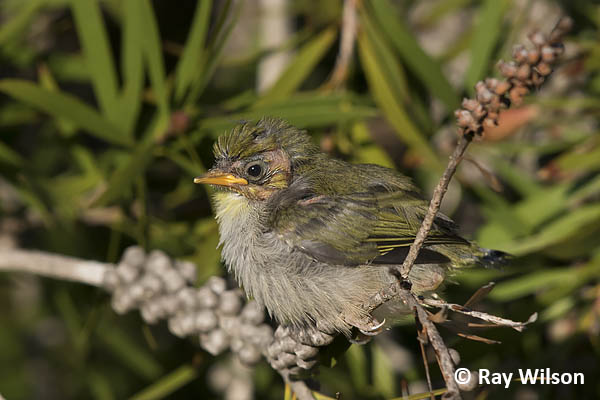
- Home
- Photography Tours
- Diary / Blog
- Galleries
- Foreign Trips
- Tasmania 2016
- NE Queensland 2016
- Western Alps 2016
- NE Spain 2016
- Australia's Wet Tropics 2015
- Australia's Top End 2015
- SW Australia 2015
- Switzerland 2015
- Andalucia 2015
- Belize 2015
- Australia 2014
- Switzerland 2014
- Belize 2014
- Bahama Islands 2014
- Switzerland 2013
- Ecuador 2012-2013
- Florida 2011-2012
- Vancouver Island 2011
- Australia 2010
- Peru 2008
- Bulgaria 2007
- Lesvos 2006
- California 2006
- New Zealand 2005
- Extremadura 2005
- Goa, India 2004
- The Gambia 2003
- About
September 2015
Southwestern Australia
Part 3: Stirling Range continued
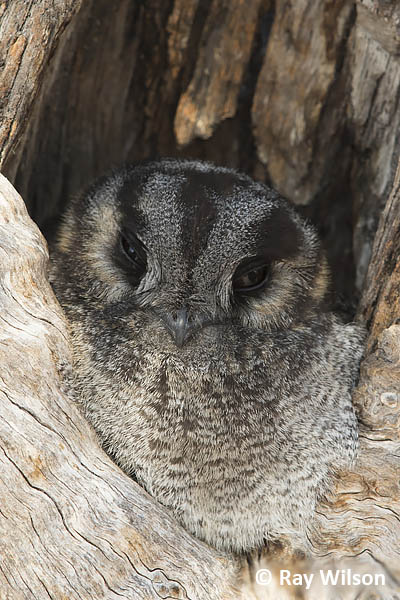
Australian Owlet-nightjar (Aegotheles cristatus)
Towards the end of my stay at Stirling Range Retreat, the resident Owlet-nightjar changed its habits and moved from its original daytime roost in the hollow of a horizontal, dead branch to nestbox 14 which had a better exposure to the late afternoon sun. Despite being totally nocturnal in their activity patterns, Australian Owlet-nightjars do seem to enjoy sitting in the sun at the entrance to their roosting holes. This behaviour probably also serves the purpose of allowing the birds to keep an eye out for potential predators. From a photographer's point of view, you can't go far wrong with having a cute, fluffy-looking Owlet-nightjar peering out at you from its hole!
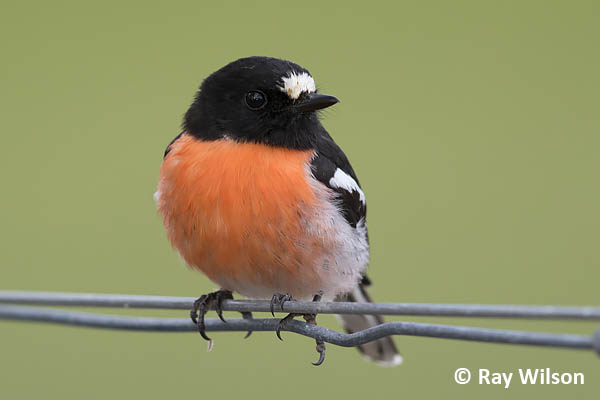
male Scarlet Robin (Petroica boodang)
Several pairs of Scarlet Robins were busy with nesting duties on the property and both sexes could often be seen hunting insects from convenient perches.
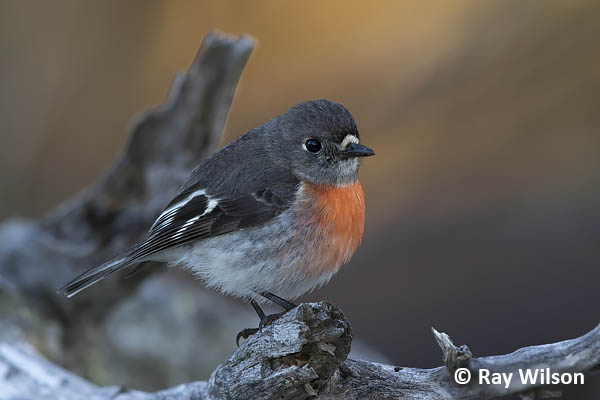
female Scarlet Robin (Petroica boodang)
New Holland Honeyeaters were very common wherever flowering shrubs occurred. They especially liked Banksias...
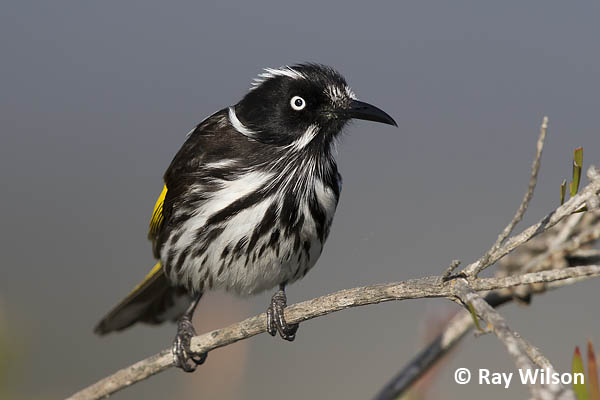
New Holland Honeyeater (Phylidonyris novaehollandiae)
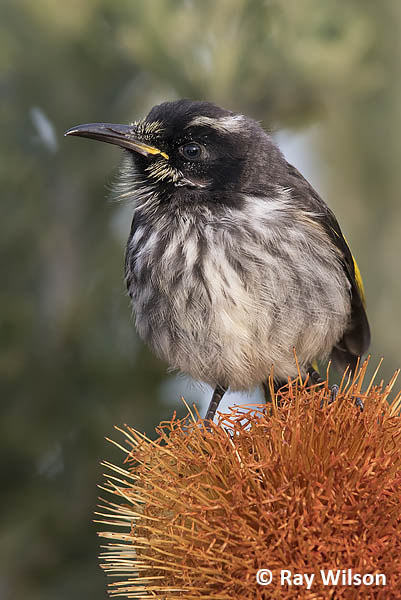
juvenile |
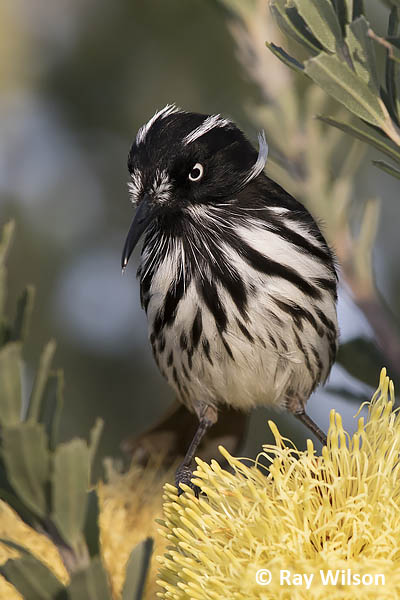
adult |
New Holland Honeyeater (Phylidonyris novaehollandiae)
Tawny-crowned Honeyeaters were much scarcer but a couple of pairs could sometimes be found in the shrubby vegetation bordering the entrance road.
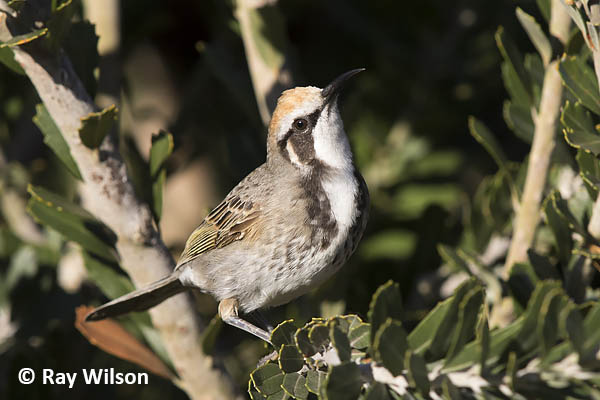
Tawny-crowned Honeyeater (Gliciphila melanops)
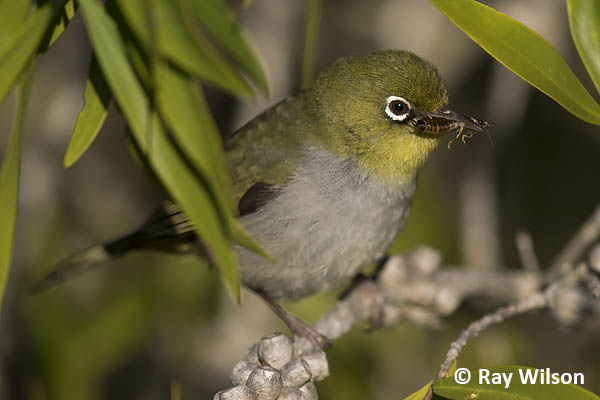
Silvereye (Zosterops lateralis chloronotus)
The adult Silvereye shown above was very busy feeding its recently fledged chicks, who where still having problems with their balance and looked like they had only just left the nest.
newly-fledged Silvereye (Zosterops lateralis chloronotus)
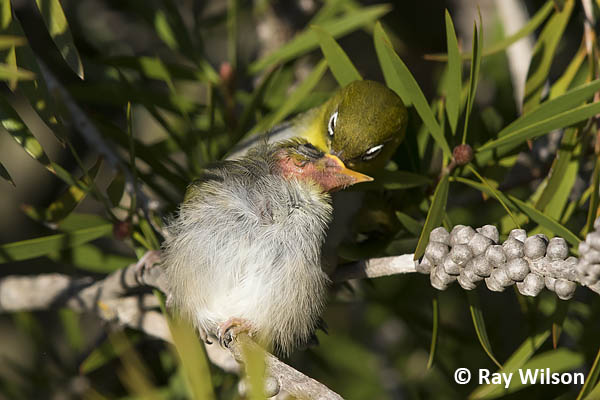
Silvereye (Zosterops lateralis chloronotus) feeding its newly-fledged chick
The introduction of European Rabbits to Australia in 1859 was a disaster for several species of native wildlife, such as the Bilby. Within a few years they had spread throughout most of Australia as the mild winters meant they could breed all year round. The use of biological control through the introduction of rabbit-specific viruses, such as Myxomatosis cuniiculi, and more recently Rabbit Haemorrhagic Disease, has proved relatively effective in reducing rabbit numbers to more acceptable levels, however, the forces of natural selection are a constant barrier to a permanent solution and after only 60 years since the first introduction of Myxomatosis to Australia, almost all wild rabbits are completely immune to the disease. If anyone ever needs a good example of evolution in action, this is it!
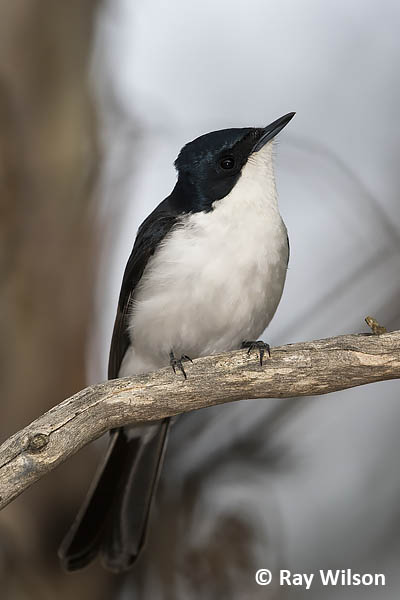
Restless Flycatcher (Myiagra inquieta) |
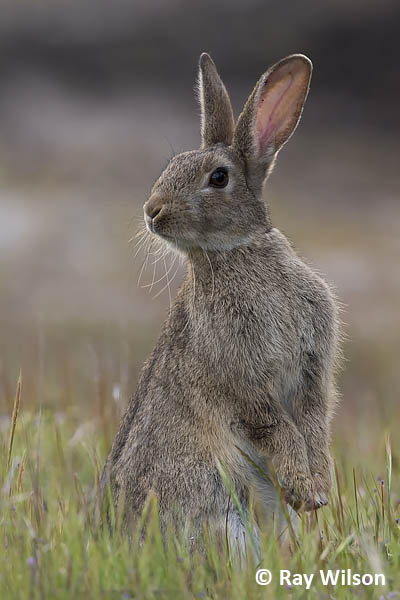
European Rabbit (Oryctolagus cuniculus) |
The botanical diversity and the level of endemism in southwestern Australia is staggering. In the Stirling Range alone, there are over 450 species of orchid, many of which are found nowhere else. The photos below illustrate just a few of the many beautiful and spectacular orchids in flower during mid-September.
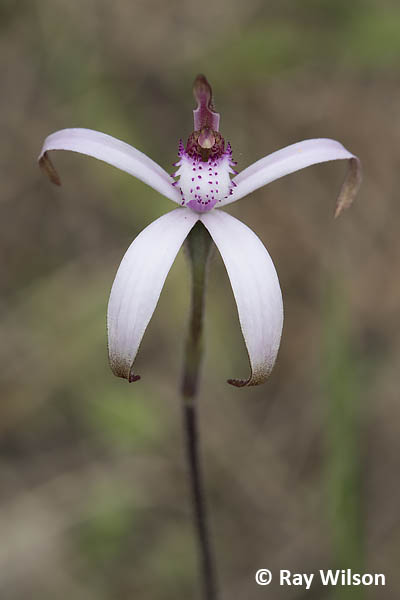
Pink Candy Orchid (Caldenia hirta) |
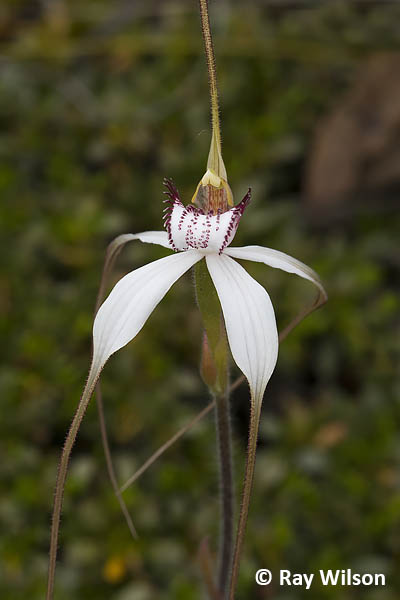
White Spider Orchid (Caladenia longicauda) |
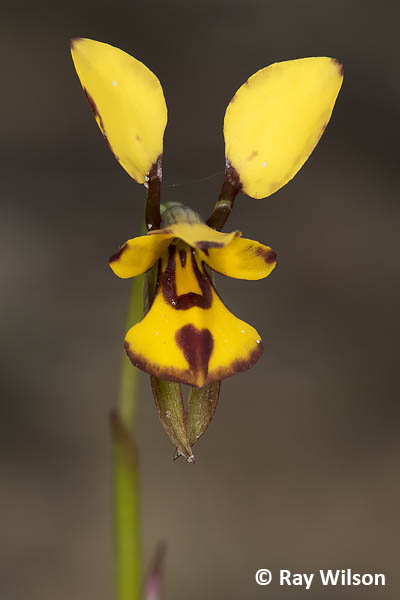
Banded Bee Orchid (Diuris laxiflora) |
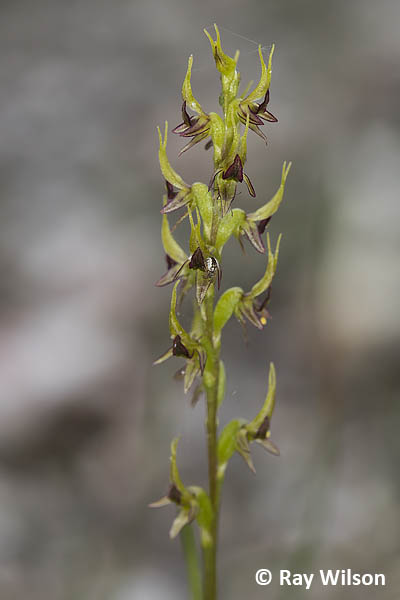
Little Laughing Leek Orchid (Prasophyllum macrostachyum) |
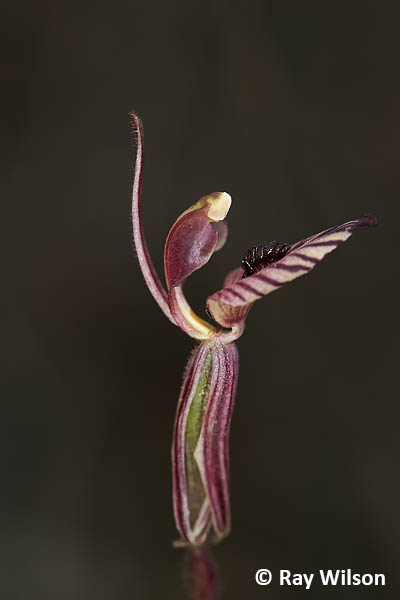
|
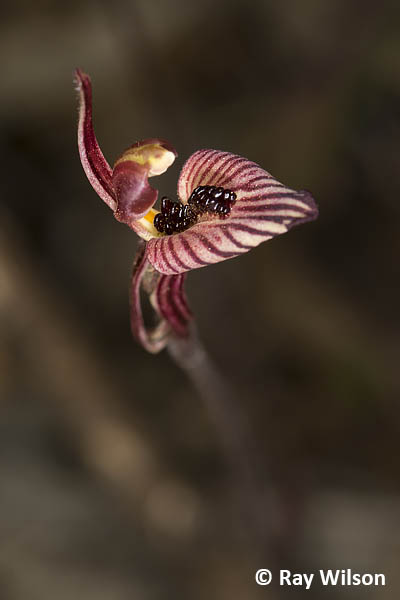
|
Zebra Orchid (Caladenia cairnsiana)
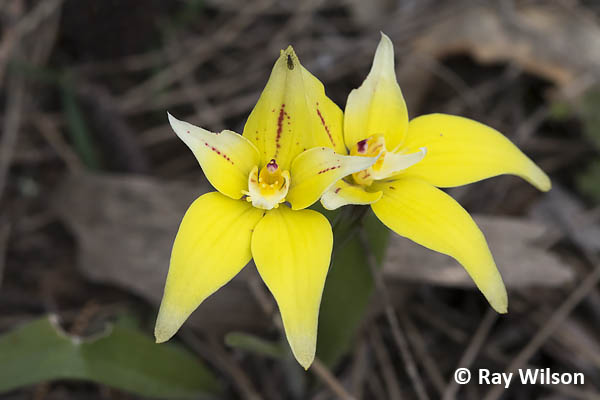
Cowslip Orchid (Caladenia flava)
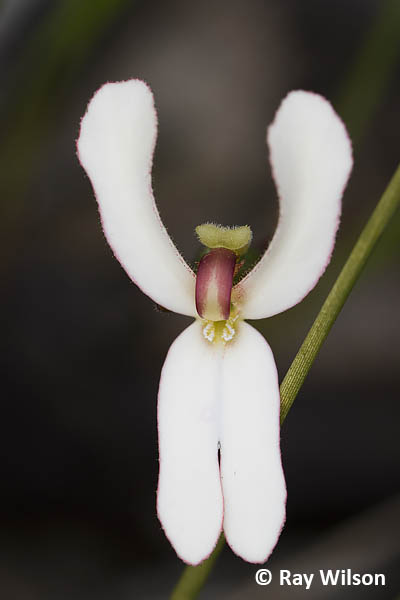
Cowkicks (Stylidium schoenoides)
Ray Wilson owns the copyright of all images on this site.
They may not be used or copied in any form without prior written permission.
raywilsonphotography@googlemail.com
